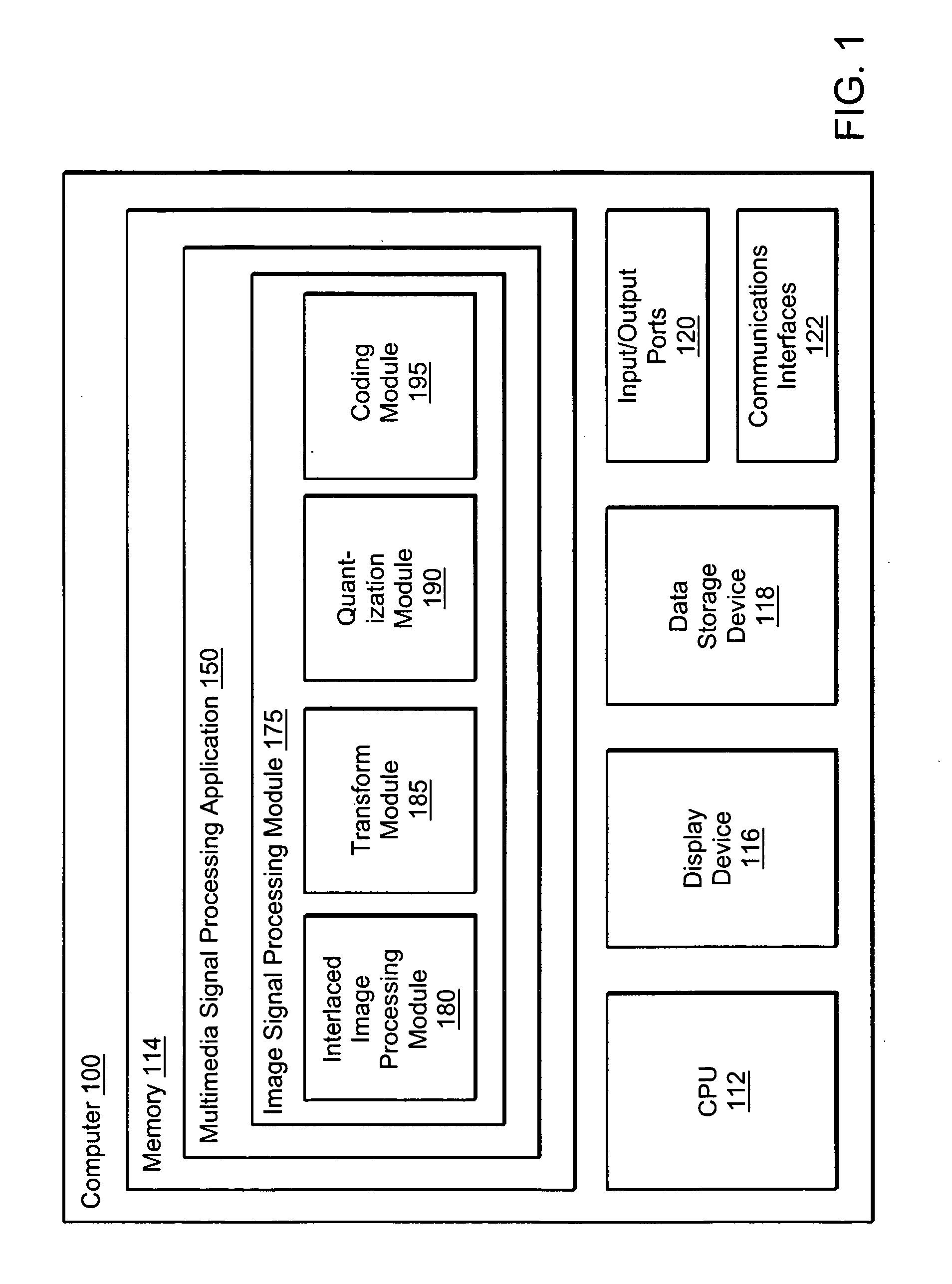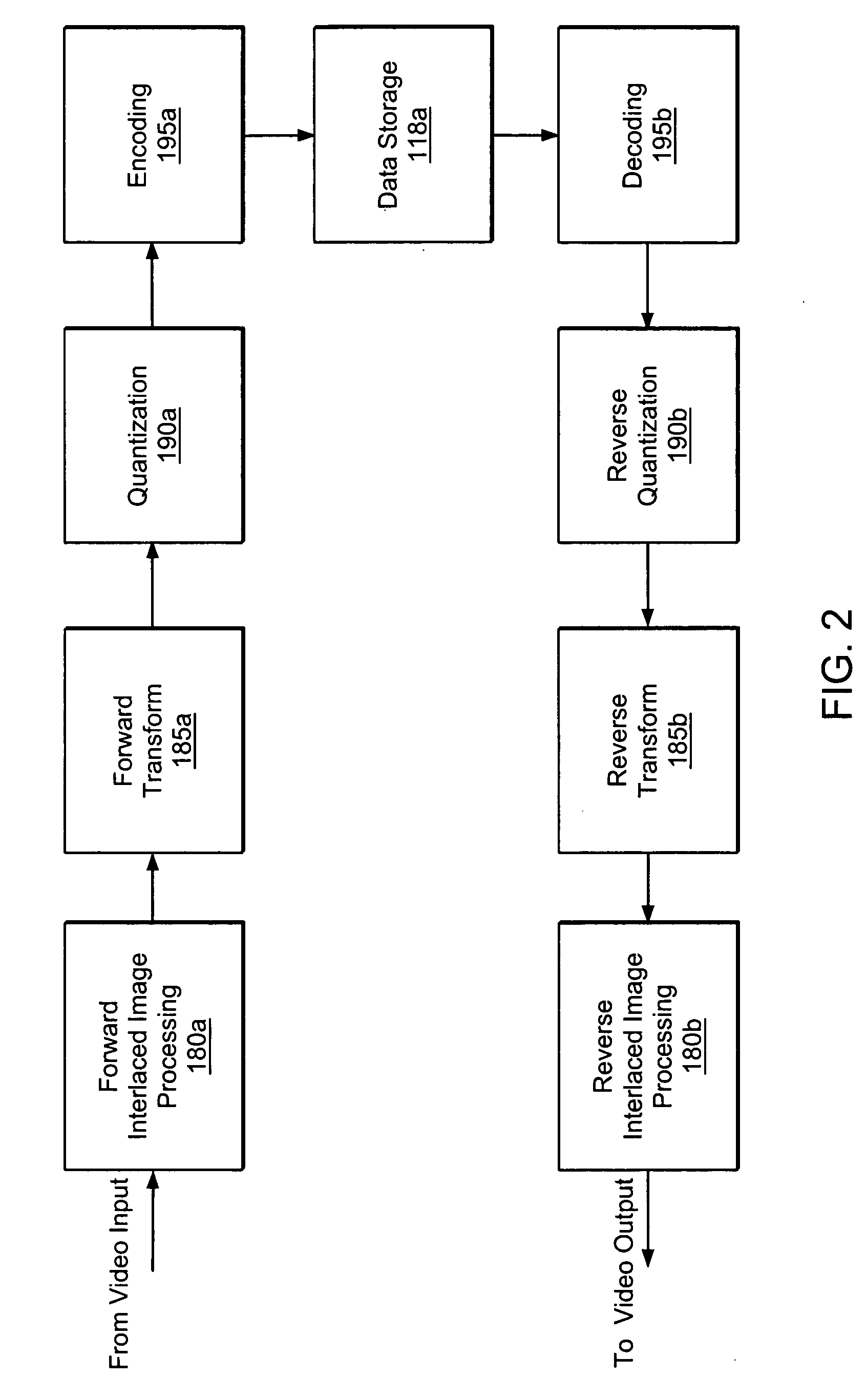Apparatus and method for improved interlace processing
a technology of interlaced motion and apparatus, applied in the field of digital image signal processing, can solve the problems of inefficient encoding, inefficient encoding, inefficient encoding, etc., and achieve the effect of optimizing the compression of motion images and avoiding inefficiencies and inadequacies
- Summary
- Abstract
- Description
- Claims
- Application Information
AI Technical Summary
Benefits of technology
Problems solved by technology
Method used
Image
Examples
Embodiment Construction
[0026] Referring now to the block diagram of FIG. 1, a computer 100 incorporating an embodiment of an interlaced image processing module 180 constructed in accordance with the present invention is shown.
[0027] The computer 100 includes a CPU 112, memory 114, display device 116, data storage device 118, input / output ports 120 and communications interfaces 122. The CPU 112 is arranged to execute instructions, such as those stored in memory 114, which may be a conventional RAM or any conventional memory for storing instructions for execution by the CPU 112. The display device 116 is conventional, such as a CRT, LCD or LED type display. Various conventional hardware for storing data may be used for the data storage device 118, such as a hard disk, or a tape drive. The input-output ports 120 are also conventional, and can be arranged to input and output video signals, such as interlaced motion image signals (e.g., NTSC broadcast television format). Although it is understood that the com...
PUM
 Login to View More
Login to View More Abstract
Description
Claims
Application Information
 Login to View More
Login to View More - R&D
- Intellectual Property
- Life Sciences
- Materials
- Tech Scout
- Unparalleled Data Quality
- Higher Quality Content
- 60% Fewer Hallucinations
Browse by: Latest US Patents, China's latest patents, Technical Efficacy Thesaurus, Application Domain, Technology Topic, Popular Technical Reports.
© 2025 PatSnap. All rights reserved.Legal|Privacy policy|Modern Slavery Act Transparency Statement|Sitemap|About US| Contact US: help@patsnap.com



